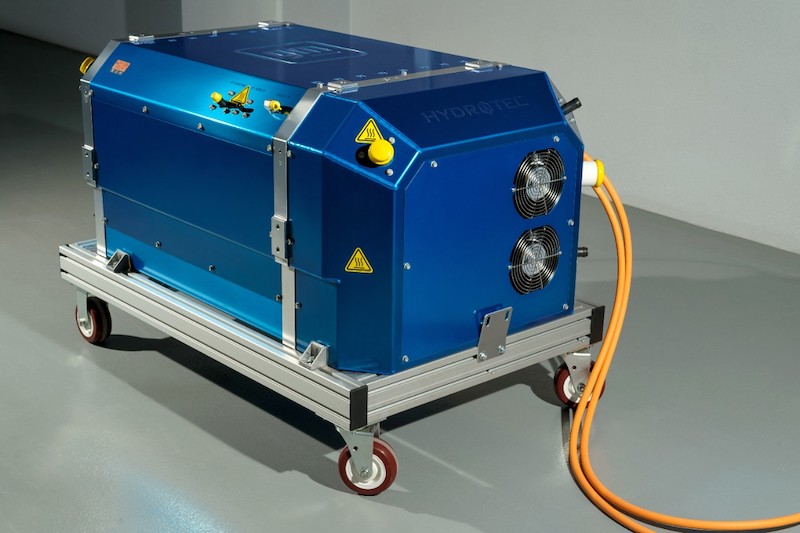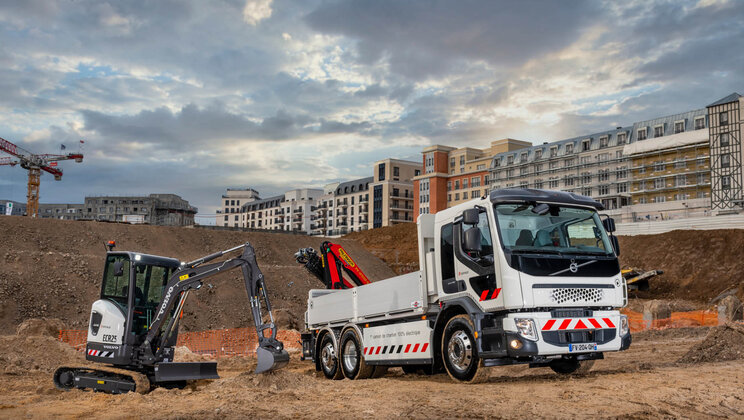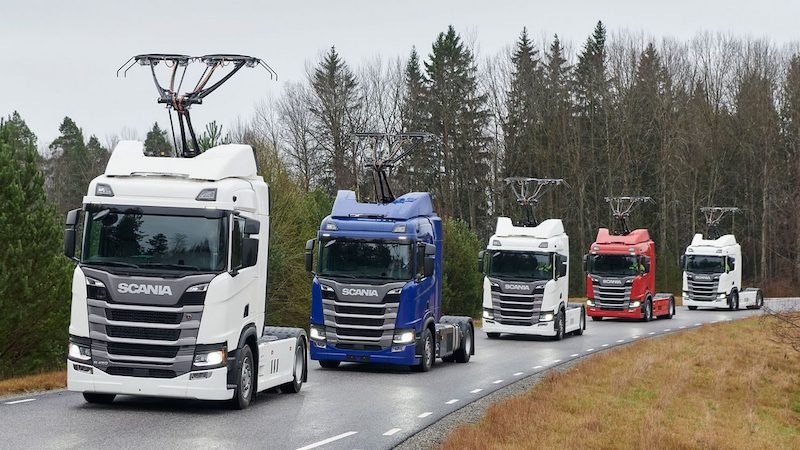General Motors will supply its Hydrotec fuel cell power cubes to truck-making giant Navistar for use in its production model fuel cell electric vehicle (FCEV) – the International RHTM Series.
Navistar’s FCEV will get energy from two GM Hydrotec fuel cell power cubes.
Each Hydrotec power cube contains 300-plus hydrogen fuel cells along with thermal and power management systems.
GM says the power cubes are compact and easy to package and can be used in a wide range of applications, including marine, earth-moving and mining equipment, locomotives and power generators.
The Hydrotec fuel cell’s dimensions are 564mm x 1223mm x 792mm. It is capable of rapid refuelling and although the technology is being used in trucks in this instance, it can also be applied to marine vessels, trains, and power generators. The cell can be used in arrays of two or three for greater power.

GM’s says it plans to advance “an all-electric future that is inclusive and accessible to all”. At the heart of this strategy is the Ultium battery platform, which powers everything from mass-market to high-performance vehicles.
Electric construction vehicles
Meanwhile, Volvo has launched a new generation of zero exhaust emissions products as part of its strategy to ditch petrol engines in the long run.
French construction contractor Eiffage has taken delivery of an all-electric Volvo FE Electric truck and a Volvo ECR25 Electric compact excavator – becoming the first recipient of Volvo’s products in France.
Martin Lundstedt, Volvo Group CEO, says: “By 2030, we want over a third of the machines the Volvo Group sells to be electric. We can’t do this alone, we want to do this together with our customers, partners like Eiffage and the wider society.
“Today is an exciting landmark on this journey to shape the future of transport and infrastructure.”

Melker Jernberg, president of Volvo CE, says: “Today’s deliveries of this electric truck and construction machine is the start of a revolution in transport and infrastructure solutions.
“Make no mistake, electric machines are not going to remain a niche product area. Over the course of the next years and decades they will become the dominant source of low-or-no emission power.
“When coupled with clean energy, their potential to support climate change goals, improve air quality and help build the world we all want to live in cannot be underestimated. I’m very pleased that we are starting this journey with friends such as Eiffage.”
Roger Alm, president of Volvo Trucks, says: “The support from forward-thinking customers like Eiffage is important for the future development of sustainable transport solutions.
“Keeping a close dialogue with customers means that we all learn faster and together can accelerate the necessary transition into a fossil-free future.”
Gamification of electrification
Another automotive company which has unveiled an innovative electrification product recently is Volkswagen, although this one involves electrifying the roads.
Scania, a VW subsidiary, is to supply seven more pantograph-equipped trucks to operate on a stretch of electrified motorway in Germany.
The A5 motorway, near Frankfurt, is itself to be extended by almost seven kilometres, brining it to 12 km.
With 135,000 vehicles daily, including 14,000 trucks, the A5 motorway south of Frankfurt is one of the busiest and most heavily polluted sections of road in Germany.

Developed by Siemens, the electrification system used on these roads allows trucks with the necessary pantograph mounted to their roof to travel at speeds of up to 90 km/h on fully electrical power, converting back to the truck’s internal combustion engine once leaving the electrified stretch, ideally powered by biodiesel for a larger CO2-reduction.
In simple terms, electrified motorways or stretches of road enable vehicles to charge up without having to stop, as anyone who’s ever played a futuristic racing game on their computer or console can probably imagine.
Magnus Höglund, head of infrastructure and charging solutions at Scania, says: “Unlike passenger cars, which remain parked and stationary most of the day, trucks are deployed for long hours in transport assignments when stopping to charge can be highly disruptive in the operations.
“Electric roads offer rational and effective charging en route. While this is technically just another way to charge electric trucks, the solution can be particularly relevant on heavily trafficked roads, and additionally it saves batteries and reduces load on the energy network.”
